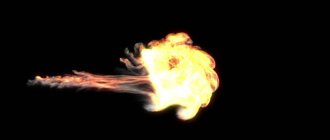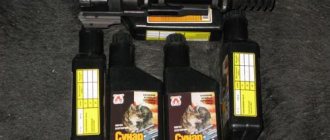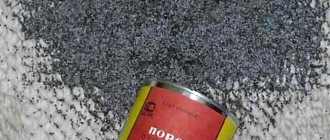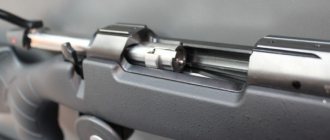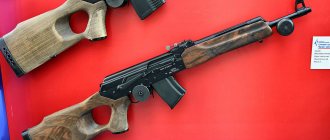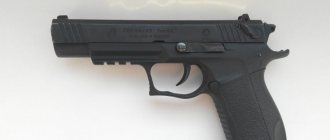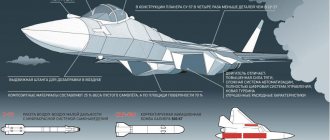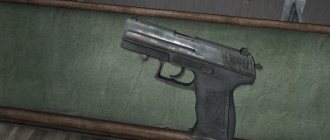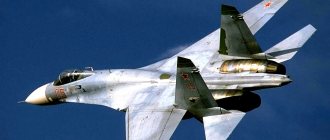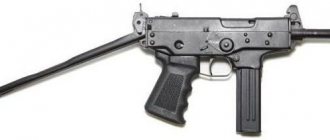Historical excursion
Ancient world
The history of the creation of gunpowder is not reliably known. According to some sources, it was used in ancient India around the 15th century BC. According to other sources, this explosive was developed by the Chinese in the 1st century AD. Moreover, it was originally intended not for military purposes, but for medical purposes. A mixture of saltpeter and honey was set on fire, producing “medicinal” smoke.
However, the generally accepted opinion is that gunpowder was invented later. Presumably it was first invented by the Chinese alchemist Sun Simiao in the 7th century. As a result of mixing saltpeter, sulfur and locus tree bark and heating the mixture in a crucible, an unusually powerful flash of flame occurred. This fact led the alchemist to think about the possibility of using the substance for pyrotechnic purposes.
Gunpowder began to be used to organize fireworks. This material was poured into bamboo and then set on fire, pointing the stems into the sky. There are also references to the use of gunpowder for military purposes: bombs were made with its help. Bombing was carried out using a catapult.
Appearance in Europe
Over time, the secret of gunpowder production spread throughout the world. First, the Indians mastered its production, then the Arabs, and finally the technology reached Europe. Moreover, the Europeans rethought the very idea of using gunpowder, starting to use the power of gas to launch projectiles.
There are other theories regarding the appearance of gunpowder in Europe. According to them, the method of its manufacture was invented by the Europeans themselves. According to some reports, the championship belongs to the Englishman Roger Bacon; he invented the first gunpowder known in Europe and mentioned this substance in his scientific work of 1242. Be that as it may, gunpowder was not actively used in those days.
In the 14th century, the second “invention” of gunpowder occurred. This time it was associated with the name of the famous alchemist - Berthold Schwartz. The discovery took place, as often happens, by chance. When mechanically applied to a mixture of saltpeter, coal and sulfur, it ignited. It is believed that Schwartz first introduced the idea of using gunpowder in artillery.
In 1346, the British first used gunpowder artillery charges in battle against the French. A charge was placed in the cannon, the fuse protruded outward, and there was a core (stone or metal) in the barrel. The lit fuse transferred the fire to the gunpowder, causing the gases to push the cannonball out. The use of such charges in artillery radically changed the nature of warfare.
At the end of the 19th century, the French chemist Viel developed smokeless pyroxylin gunpowder. In 1888, Alfred Nobel created a recipe for ballistic gunpowder. A year later, cordite gunpowder was invented in England.
Gunpowder in Russia
In 1887–1891 Russian chemist-inventor Mendeleev developed pyrocollodion gunpowder. Mikhailo Lomonosov also contributed to the technology even earlier.
The production of powder substances began in the 15th century, when the first enterprises of this profile opened in Russia. The industry developed especially rapidly under Peter I, who founded three large factories in St. Petersburg and its environs.
Modern production
Currently, gunpowder is still widely used in various fields, primarily military. The available varieties are usually divided into the following categories according to their chemical composition:
- Mixed species. These include smoky (aka black) gunpowder.
- Aluminum. A variety of mixed compositions.
- Nitrocellulose (smokeless) varieties. The group includes pyroxylin, ballistite and cordite gunpowder.
History of invention
It is difficult to say in what year the Chinese invented gunpowder, but there is evidence that already in the sixth century the Chinese had an idea of a mixture of several components that burned with a bright flame.
The palm in the invention of gunpowder rightfully belongs to the monks of Taoist temples. Among them there were a lot of alchemists who constantly carried out experiments to create They combined various substances in different proportions, hoping one day to find the right combination. Some Chinese emperors were heavily dependent on these drugs; they dreamed of eternal life and did not hesitate to use dangerous mixtures. In the middle of the ninth century, one of the monks wrote a treatise in which he described almost all known elixirs and methods of their use. But this was not the most important thing - several lines of the treatise mentioned a dangerous elixir that suddenly caught fire in the hands of the alchemists, causing them incredible pain. It was not possible to extinguish the flames, and the whole house burned down in a few minutes. It is these data that can put an end to the dispute about what year gunpowder was invented and where.
Although, until the tenth and eleventh centuries, gunpowder was not mass produced in China. By the beginning of the twelfth century, several Chinese scientific treatises had appeared detailing the components of gunpowder and the concentration required for combustion. It is worth clarifying that when gunpowder was invented, it was a flammable substance and could not explode.
Mixed varieties
Smoky varieties are produced in accordance with strict technological standards. The proportions of components may vary in different countries. Black powder is usually divided into granular substances and powder. The composition of smoky varieties includes potassium nitrate, sulfur, and charcoal. Potassium nitrate acts as an oxidizing agent, which improves combustion. Charcoal is a combustible component, and sulfur is an additive (intensifies combustion).
Grain varieties are produced in the form of irregularly shaped grains. The technological process includes 5 stages (in addition to drying and packaging):
- grinding into powder;
- creating a mixture;
- pressing to a disc-shaped state;
- granulation;
- polishing
The combustion efficiency of black powder is determined primarily by the fineness of the components, the quality of their mixing and the shape of the grains.
There is a classification based on grain size:
- large (0.75–1.25 mm in diameter);
- average (0.6–0.75);
- small (0.4–0.6);
- very small (0.25–0.4).
Black powder is used not only for hunting, but also for some other purposes. The difference between them is in the chemical composition.
The following varieties are currently produced:
- corded (for fire cords);
- rifle (necessary as an igniter for smokeless varieties);
- slow-burning smoky (strengthens or slows down the process in fuses and tubes);
- coarse-grained smoky (for igniters);
- mine (explosive);
- sports;
- hunting.
For hunting purposes, the optimal composition contains components in the following proportions:
- potassium nitrate - 76%;
- coal - 15%;
- sulfur - 9%.
The melting point of black powder is 300 degrees Celsius. A substance ignites when exposed to a spark or flame. In this regard, the material is considered dangerous to handle. Storage of black powder is allowed in sealed packaging, separately from other types of explosives. Black powder is hygroscopic and at a certain level of humidity (over 2%) does not ignite well. The peculiarity of smoky varieties is that they accelerate the development of corrosion processes in weapon barrels. Moreover, rusting is much more intense than in the case of nitrocellulose materials. This feature is associated with the presence of sulfur and sulfurous acid in combustion by-products.
The main use of smoky varieties today is fireworks. Black powder was used in firearms and explosive ammunition until the end of the 19th century.
The quality of black powder is determined by the following parameters:
- Color - black or brownish. There should not be any extraneous colors.
- Grains without a whitish tint.
- The grains should not crumble into grains of sand when squeezed. A normal reaction to mechanical stress is splitting into several parts.
- When pouring, the substance should not clump or leave a dusty trail.
In case of non-compliance with the specified parameters, the use of black powder is not allowed. The worst thing that can happen is that the gun barrel ruptures when firing.
Aluminum powder
This substance is a type of black powder and includes small particles of potassium or sodium nitrate (as an oxidizing component), aluminum powder (fuel) and sulfur. Aluminum powder is characterized by high temperature and burning rate and significant light emission. Used in explosives and flash compositions (used for flashes). Aluminum powder is almost unaffected by moisture, does not form into lumps, but is highly smeared.
Obtaining pyroxylin
Black powder until the end of the 19th century. they loaded mortars and squeaks, flintlocks and muskets, as well as other military weapons. But at the same time, scientists did not stop their research to improve this substance. An example of this is the experiments of Lomonosov, who established a rational ratio of all components of the powder mixture. History also remembers the unsuccessful attempt to replace the scarce nitrate with berthollet salt, which was undertaken by Claude Louis Bertholet. This replacement resulted in numerous explosions. Berthollet salt, or sodium chlorate, turned out to be a very active oxidizing agent.
A new milestone in the history of gunpowder production began in 1832. It was then that the French chemist A. Bracono first obtained nitrocellulose, or priroxiline. This substance is an ester of nitric acid and cellulose. The latter molecule contains a large number of hydroxyl groups, which react with nitric acid.
The properties of pyroxylin have been studied by many scientists. So, in 1848, Russian engineers A.A. Fadeev and G.I. Hess found that this substance was several times more powerful than the black powder invented by the Chinese. There were even attempts to use pyroxylin for shooting. However, they ended in failure, since the porous and loose cellulose had a heterogeneous composition and burned at an inconsistent rate. Attempts to compress pyroxylin also ended in failure. During this process, the substance often caught fire.
Nitrocellulose grades
Today, smokeless varieties of gunpowder are the most widely used. They are produced on the basis of nitrocellulose. Smokeless varieties are characterized by a high coefficient of useful smoke and the absence of smoke, which improves the shooter’s ability to hit targets.
Nitrocellulose powder is used not only in small arms, but also in the creation of explosives and pyrotechnic products. Smokeless compounds are also used as detonators to detonate explosive materials.
Nitrocellulose compositions are usually divided into several types, based on the components used and the type of plasticizer:
- Pyroxylin.
- Ballistic.
- Cordite.
- Solid rocket fuel.
Pyroxylin compositions
The components of pyroxylin powder are pyroxylin (91–96%), volatile substances (1.3–5%), stabilizer (1–1.5%), phlegmatizer (2%) and a small amount of graphite (up to 0.3%). Pyroxylin powder is produced in the form of plates, rings, ribbons, tubes, and grains. The main use of pyroxylin compositions is artillery or small arms.
Disadvantages of pyroxylin powder:
- low energy of released combustion products;
- technical difficulties with creating charges of significant diameter for rocket engines.
Pyroxylin powder is divided into several types, depending on its purpose:
- flame retardant;
- low hygroscopic (resistant to humidity);
- low-gradient (small dependence of the combustion rate on the charge temperature);
- low-erosion (low corrosive effect on the weapon barrel);
- phlegmatized (reduced combustion rate of surface layers);
- porous.
During the production of pyroxylin compositions, the following occurs: plasticization of the material, pressing of the resulting mass and final cutting to give the finished elements the desired shape. The solvent is removed in several stages. This is a labor-intensive process and leads to higher production costs.
Ballistic compounds
They include nitrocellulose and a non-removable plasticizer, which is why this type of gunpowder is called dibasic. Various components can be used as a plasticizer, including a nitroglycerin or diglycol base. The composition includes colloxylin (up to 60%), nitroglycerin (30–50%), diglycol component, aromatic additives (regulate combustion temperature), stabilizers, vaseline oil. Sometimes a finely dispersed metal alloy of aluminum and magnesium (metalized version) is present, which makes it possible to increase the temperature and released energy of the combustion products.
Ballistic compositions according to their scope of application are divided into rocket, artillery and mortar. Compared to pyroxylin powder, ballistic gunpowder is less hygroscopic, easier to manufacture, has the ability to create large charges, and is characterized by mechanical strength and flexibility. The latter quality is achieved thanks to a non-removable plasticizer. The disadvantage of ballistic compositions is the increased danger during manufacture, since the production uses a component highly sensitive to external influences - nitroglycerin. Another disadvantage is the technological impossibility of producing charges whose diameter exceeds 80 cm.
Cordite compounds
This type of gunpowder contains pyroxylin with a high specific gravity of nitrogen, a removable plasticizer (a mixture of alcohol, ether and acetone), and a non-removable plasticizer (nitroglycerin). Compared to pyroxylin compositions, cordite ones have higher power. There is also a significant drawback - a high level of stem burning due to the increased temperature of combustion products.
Solid rocket fuel
It is a mixture of synthetic polymers and includes up to 60% oxidizing agent (usually ammonium perchlorate), up to 20% polymer binder, and the same amount of fine aluminum powder. It is also possible to add specialized additives.
Solid rocket fuel was first produced in the 30s of the 20th century in Germany. In the 40s, American and Soviet enterprises began producing solid rocket fuel. The main advantages over ballistic gunpowder are the following:
- the highest specific thrust created among competing trains;
- the ability to create charges of various shapes and sizes - without restrictions on dimensions and other parameters;
- excellent deformation and mechanical properties;
- the ability to control the burning rate over a wide range.
As a result of the invention of solid rocket fuel, it became possible to launch strategic missiles over distances of up to 10 thousand km and even more. The maximum range that engineers managed to achieve using ballistic gunpowder did not exceed 2 thousand km.
However, solid rocket fuel has serious disadvantages:
- high production costs;
- long manufacturing process (takes several months);
- difficulties with disposal;
- environmental hazard due to the release of hydrochloric acid during the combustion of ammonium perchlorate.
Benefits of the new substance
Viel's white powder was a real revolutionary discovery in the field of firearms. And there were several reasons explaining this fact:
1. Gunpowder produced virtually no smoke, whereas the previously used explosive significantly narrowed the fighter’s field of vision after just a few shots fired. Only strong gusts of wind could get rid of the clouds of smoke that appeared when using black powder. In addition, the revolutionary invention made it possible not to give away the fighter’s position.
2. Viel's gunpowder allowed the bullet to fly out at greater speed. Because of this, its trajectory was more straight, which significantly increased the shooting accuracy and its range, which was about 1000 m.
3. Due to the greater power characteristics, smokeless powder was used in smaller quantities. Ammunition became significantly lighter, which made it possible to increase their quantity when moving an army.
4. Equipping the cartridges with pyroxylin allowed them to fire even when wet. Ammunition based on black powder had to be protected from moisture.
Viel's gunpowder was successfully tested in the Lebel rifle, which was immediately adopted by the French army. Other European countries rushed to apply the invention. The first of these were Germany and Austria. New weapons were introduced in these states in 1888.
Review of advantages and disadvantages
The advantages of black powder include the following qualities:
- possibility of long-term storage with full preservation of functionality;
- ease of ignition even with a weak primer;
- the quality of the cartridge is almost not determined by the wads used, rolling and charging density;
- low sensitivity to ambient temperature;
- acceptable cost.
Disadvantages of smoky compositions:
- high hygroscopicity, as soon as the humidity exceeds the 2 percent threshold, there will be problems with ignition;
- provoke the development of corrosion processes in weapon barrels, since combustion products are sulfurous acid and sulfur;
- there is a lot of smoke after the shot, which reduces the possibility of rapid aimed shooting;
- impossibility of use in semi-automatic weapons;
- flammability (low ignition temperature threshold; if a significant amount burns, there will be a strong explosion);
- low power (approximately three times lower than that of smokeless compositions) does not allow for adequate shot flight speed;
- significant recoil and loud shot.
Advantages of smokeless powder:
- slight hygroscopicity (the damp composition can be dried, and all properties will be restored);
- high power;
- there are few combustion products, resulting in less barrel clogging;
- suitable for use in semi-automatic machines;
- no heavy smoke, less noisy shot.
The disadvantages of smokeless formulations include the following characteristics:
- high combustion temperatures provoke faster wear of the weapon barrel;
- the need for strict adherence to storage rules;
- shelf life is shorter compared to smoky formulations;
- instability to temperature changes.
Form
Pyroxylin, used for the production of smokeless powder, is treated with an oxidizing agent, the basis of which is an alcohol-ether mixture. The end result is a homogeneous jelly-like substance. The resulting mixture is subjected to mechanical processing. The result is a granular structure of the substance, the color of which varies from yellow-brown to pure black. Sometimes within the same batch a different shade of gunpowder is possible. To give it a uniform color, the mixture is treated with powdered graphite. This process also makes it possible to level out the stickiness of grains.
Definition of quality
There is an effective way to check the quality of the powder composition. By its appearance, one can determine not only the suitability of an explosive for use, but also its purpose.
To carry out the test, you need gunpowder itself, a small paper strip and a stopwatch. Fold the paper in half to create a groove. We measure 5 cm along the groove, put two strips. Between them we pour 0.25–0.3 g of gunpowder. We set fire to one paper end. As soon as the flame reaches the gunpowder, connect the stopwatch. We turn it off immediately after the explosive burns out.
Test results may indicate the following types of powder:
- 0.5 sec. - smoky;
- 1.6 sec. - smoky composition or smokeless, but prone to detonation;
- 1.8-2.2 sec. — high-quality smokeless for hunting;
- 2.3-2.4 sec. - unsuitable quality smokeless hunting;
- 4 sec. - pistol;
- rifle.
Literature
- Mao Tso-ben.
It was invented in China / Translation from Chinese and notes by A. Klyshko. - M.: Young Guard, 1959. - P. 35-45. — 160 s. — 25,000 copies. - Jack Kelly.
Powder. From alchemy to artillery. The story of the substance that changed the world = Gunpowder. Alchemy, Bombards, & Pyrotechnics: The History of the Explosive that Changed the World. - KoLibri, 2005. - 344 p. — 5000 copies. — ISBN 5-98720-012-1. - Cheltsov I.M.
Gunpowder // Encyclopedic Dictionary of Brockhaus and Efron: in 86 volumes (82 volumes and 4 additional). - St. Petersburg, 1890-1907. - Buchanan, Brenda J., ed. (2006), , Aldershot: Ashgate, ISBN 0-7546-5259-9, https://muse.jhu.edu/login?auth=0&type=summary&url=/journals/technology_and_culture/v049/49.3.bachrach.html>
- Needham, Joseph (1986), Science & Civilization in China
, vol.
V:7: The Gunpowder Epic
, Cambridge University Press, ISBN 0-521-30358-3
Powder selection
Smokeless compositions are superior to smoky ones in almost all characteristics. Most cartridge manufacturers offer smokeless powder for their cartridges. They provide the best and most consistent ballistic performance for hunting ammunition.
There is a wide variety of smokeless formulations on the market. The most popular among hunters are “Falcon”, “Sunar”, “Irbis”, “Leopard”.
The Sokol brand has been produced since 1937. "Sunar" is an improved modification of the "Falcon", giving the ammunition better ballistic properties. Both compositions have a pyroxylin base.
In the late 70s, compositions of the Bars brand appeared. They were conceived as universal, suitable for most cases. However, the nitroglycerin base quickly wore out gun barrels. In addition, Bars is only suitable for 1220 caliber weapons. The use of this type of gunpowder for smaller caliber guns can lead to damage to the mechanical properties. Using Bars, it is difficult to properly load cartridges, since this gunpowder is not the same in density. Therefore, falling asleep “by eye” will definitely lead to a mistake.
Advice! Due to many disadvantages, it is not recommended to use Bars for inexperienced hunters. However, some professionals consider this brand to be the most suitable for waterfowl hunting.
The Irbis brand was developed at the Kazan Powder Plant more than a century ago. The technological process has remained virtually the same since then. The only qualitative change is new packaging, which has significantly increased the shelf life of the substance.
Black powder is much more difficult to find on sale. It is mainly used by collectors of antique weapons. In this case, the use of smoky varieties is completely justified, and sometimes is the only possible option for shooting.
Notes
- Military objects - Radio compass / . - M.: Military publishing house of the Ministry of Defense of the USSR, 1978. - P. 456. - (Soviet Military Encyclopedia: ; 1976-1980, vol. 6).
- Buchanan. "Editor's Introduction: Setting the Context", in .
- ↑ :31–32
- Peter Allan Lorge (2008), The Asian military revolution: from gunpowder to the bomb
, Cambridge University Press, p. 32, ISBN 978-0-521-60954-8 - :4
- The Big Book of Trivia Fun
, Kidsbooks, 2004 - Peter Allan Lorge (2008), The Asian military revolution: from gunpowder to the bomb
, Cambridge University Press, p. 18, ISBN 978-0-521-60954-8 - , p. 7 “Without doubt it was in the previous century, around +850, that the early alchemical experiments on the constituents of gunpowder, with its self-contained oxygen, reached their climax in the appearance of the mixture itself.”
- , p. 2 “With its ninth century AD origins in China, the knowledge of gunpowder emerged from the search by alchemists for the secrets of life, to filter through the channels of Middle Eastern culture, and take root in Europe with consequences that form the context of the studies in this volume."
- Needham, Volume 5, Part 7, 83
- :1 “The earliest known formula for gunpowder can be found in a Chinese work dating probably from the 800s. The Chinese wasted little time in applying it to warfare, and they produced a variety of gunpowder weapons, including flamethrowers, rockets, bombs, and land mines, before inventing firearms."
- Ebrey, 138.
- :31
- Peter Allan Lorge (2008), The Asian military revolution: from gunpowder to the bomb
, Cambridge University Press, pp. 33–34, ISBN 978-0-521-60954-8 - , p. 2
- Jack Kelly Gunpowder: Alchemy, Bombards, and Pyrotechnics: The History of the Explosive that Changed the World, Perseus Books Group: 2005. - pp. 2-5. ISBN 0-465-03722-4, 9780465037223
- Jack Kelly Gunpowder: Alchemy, Bombards, and Pyrotechnics: The History of the Explosive that Changed the World
, Perseus Books Group: 2005, ISBN 0-465-03722-4, ISBN 978-0-465-03722-3: 272 pages - St. C. Easton: "Roger Bacon and his Search for a Universal Science", Oxford (1962)
"Sunar"
It is a fast-burning variety. Due to the fact that it has more complete energy capabilities, during the weighing process, experts recommend taking less Sunar gunpowder. This variety, compared to others, is more powerful. In addition, if we compare this brand with Sokol gunpowder, then Sunar is denser. The dispersion of the sample does not exceed 0.05 g. Due to the fact that special scales are needed when loading cartridges, many hunters may have difficulties in this matter. Judging by numerous reviews, this gunpowder burns in the barrel channel. For this reason, the sound of the shot is relatively quiet, there is no recoil, and the flame is practically not knocked out of the barrel. According to experienced hunters, a shot can be considered high-quality if at night the length of the knocked-out flame does not exceed 150 mm. During the day it should not be visible at all. Gunpowder "Sunar" is produced in Tambov. It is based on pyroxylin components. According to the owners, with such products it is possible to equip cartridges for smoothbore and hunting rifles. On average, the pressure is in the range of 630-680 bar. The fired projectile flies at a speed of 320 m/s.
Products from Nobel Sport
Relatively recently, the French company Nobel Sport began producing Drago (Vectan) hunting powder for smoothbore gun owners. Designed for loading 12/70 ammunition. Used with Cheddite (CX2000) capsules. With a shot load of 32 to 34 g, the cartridge must contain a powder charge weighing from 1.58 to 1.63 g. Experts advise using Drago with 12N22 container wads. The loaded cartridge has a length of 5.8 cm. Gunpowder is supplied to the market in packages weighing 500 g. To become the owner of this product, you will have to shell out 1,200 rubles.
Acquaintance
Previously, hunting enthusiasts had only black powder at their disposal. As a result of firing such cartridges, a very strong roar was obtained, and a large amount of fire and smoke was generated. This had a negative impact on the condition of the trunks. As a result, hunters often had to clean them of carbon deposits. Judging by the reviews, it was impossible to do this without special alkaline solutions. Some craftsmen used washing powder for cleaning, namely, they poured the solution into the barrel and left it there for a while. The situation has improved significantly with the advent of smokeless varieties, which will be discussed later.
Bibliography[edit]
- Campbell, John (1985). Naval weapons of World War II
. Naval Institute Publishing House. ISBN 0-87021-459-4. - Davis, Tenney L. (1943). Chemistry of Gunpowder and Explosives
(Angriff Press [1992]). ISBN by John Wiley & Sons Inc. 0-913022-00-4. - Dallman, John (2006). “Question 27/05:” Flameless “gunpowder”. Warship International
.
XLIII
(3): 246. ISSN 0043-0374. - Davis, William C. Jr. (1981). Unloading. National Rifle Association of America. ISBN 0-935998-34-9.CS1 maint: multiple names: list of authors (link)
- Fairfield, A. P., C. D. R. USN (1921). Naval artillery
. Lord Baltimore Press.CS1 maint: several names: list of authors (link) - Gibbs, Jay (2010). “Question 27/05:” Flameless “gunpowder”. Warship International
.
XLVII
(3): 217. ISSN 0043-0374. - Grobmeier, A. H. (2006). “Question 27/05:” Flameless “gunpowder”. Warship International
.
XLIII
(3): 245. ISSN 0043-0374. - Grulich, Fred (2006). “Question 27/05:” Flameless “gunpowder”. Warship International
.
XLIII
(3): 245–246. ISSN 0043-0374. - Hatcher, Julian S. and Barr, Al (1951). Unloading
. Hennage Lithograph Company. - Matunas, E. A. (1978). Winchester-Western Ball Powder Loading Data
. Olin Corporation. - Milner, Mark (1985). North Atlantic Race
. Naval Institute Publishing House. ISBN 0-87021-450-0. - Wolfe, Dave (1982). Powder Profiles Volume 1
. Wolfe Publishing. ISBN 0-935632-10-7.
Smokeless explosive components
Different types of gunpowder may contain various active and auxiliary components:
- Explosives: Nitrocellulose, the active ingredient in most smokeless powders
- Nitroglycerin, active component of dibasic and tribasic formulations
- Nitroguanidine, component of tribasic compounds
- Cellulose acetate, added to increase muzzle energy and bullet speed
- Hexogen, an additive to gunpowder
- Dibutyl phthalate
- Rosin
- Diphenylamine
-nitroaniline
- Tin and its compounds, such as tin oxide
- Potassium nitrate
- Diethylene glycol nitrates (diethylene glycol dinitrate is used in most cases)
- Graphite - anti-caking and antistatic lubricant (coats the granules to prevent them from sticking together and spontaneous combustion from sparks of static electricity)
The properties of gunpowder greatly depend on the size and shape of its granules. The surface of the granules affects the change in their shape and combustion rate. By varying the shape of the granules, you can influence the pressure and time curve of the powder combustion process.
Compounds that burn faster produce more pressure at higher temperatures, but also increase wear on gun barrels.
About equipment
This brand is very dependent on the components of the ammunition. If they are combined unsuccessfully, for example, the hunter used hard “Zhevelo-M”, then during the shot the pressure inside the cartridge case will rise, resulting in an increase in recoil. In this case, the scree will have low accuracy. A similar effect is observed with rigid container wads embedded in the shape of an asterisk. It is more advisable to use soft felt wads “Zhevelo-N”, rolled by twisting. Thus, replacing primers will affect the pressure inside the barrel channel, and therefore the accuracy of the fire. The pressure indicator increases to 250 kg/cm2.
What you need to know when loading ammunition
Every shooter should have an understanding of how cartridges are loaded with their own hands. When starting this procedure, it is worth remembering a number of misconceptions regarding this area. Thus, beginners are often convinced that the more gunpowder there is, the more powerful the shooting will be. However, it is not. The practice of the most experienced hunters and laboratory studies have proven that when adding gunpowder, it is imperative to observe the measure
It is important to consider that cans with this component often indicate not the average required weights, but the maximum permissible
If a hunter in warm weather loads a cartridge with a maximum weight of gunpowder of 2.5 g and shot of 35 g, then the gun will have extremely strong recoil, the accuracy of fire will decrease significantly, and the shot will be deformed. As a result, it will not be balls that will fly towards the target, but deformed lumps of lead. They will lose speed extremely quickly. When shooting at a distance of 35-40 meters, wounded animals will be the most common occurrence. However, the fact that the shot will be deformed will reduce not only the rate of fire, but also the accuracy. For this reason, all hunters have long been convinced that it is best when there is less deformed shot.
Quotes [edit]
- Joseph, Vinny (2012). Encyclopedia of Solid Fuels. Delhi: White Word Publications. ISBN 9781283505086. Retrieved May 31, 2018.
- Hatcher, Julian S. and Barr, Al Handloading
Hennage Lithography Company (1951) p.34 - ^ abcdefg Fairfield, A.P., CDR USN Naval Ordnance
Lord Baltimore Press (1921) - ^ abcdefghi Sharp, Philip B. The Complete Manual of Hand Loading,
3rd Edition (1953) Funk & Wagnalls - see gunpowder
- Black powder vs smokeless powder | Comparison of Powder Types, Bob Schell, Tuesday, October 13, 2015
- ^ B s d e g h i J k l m p o r a QR sec t u V w x y d Davis, Tenny L. Chemistry of Powder & Explosives
(1943) - ^ B s d e g Davis, William S., Jr. Handloading
the National Rifle Association of America (1981) - ^ abcde Hogg, Oliver F. G. Artillery: Its Origins, Rise and Decline
(1969) - US Patent 430212
-
Manufacture of Explosives
- HS Maxim - smokeless powder
- Laughlin & Rand Powder Company. DuPont. Retrieved February 24, 2012.
- "Properties of Gunpowder" (PDF). Nevada Aerospace Science Associates. Retrieved January 19, 2022.
- Russell, Michael S. (2009). Chemistry of fireworks
. Royal Society of Chemistry. paragraph 45. ISBN 0854041273. - ^ abcdefghijklmnopqr Campbell, John Naval Weapons of World War II
(1985 - "USA 16″/50 (40.6 cm) Mark 7". NavWeaps. 2008-11-03. Retrieved 2008-12-05.
- Matunas, E. A. Winchester Western Ball Powder data download
Olin Corporation (1978) p.3 - Wolfe, Dave Displacer Profiles Volume 1
Wolfe Publishing Company (1982) pp. 136-137 - Applications of General Dynamics commercial powders.
- ^ ab Moss GM, Leeming DW, Farrar CL Military Ballisitcs
(1969). - Milner p.68
How is ammunition loaded?
In hunting rifles of caliber No. 12, “Sunar-32” with a load of 1.9 g is used for a charge weighing 32 g. “Sunar-35” is used in cartridges with a load of 2.1 g with a charge of 35 g. For the brand “Sunar-42” » 2.1 g of charge will require 42 g. In 16-caliber rifle units, these figures are somewhat different. For example, for a cartridge with a 1.7 g charge, 30 g is provided. If the Sunar-42 load is 2.1 g, then you need to take 32 g. In 20-caliber hunting rifles, cartridges equipped with Sunar-35 are used and 42". In the first case, the weight of the charge should not exceed 35 g, in the second - 28 g.
The law does not approve
From cowboys we smoothly move on to the most powerless (and at the same time the most numerous) category of “masked” shooters - reenactors. There are only a few hunters with smokers, there are dozens of cowboys and simply lovers of shooting with muzzleloaders, but there are already thousands of recons across Russia. Moreover, their weapons often cannot be called such at all. As a rule, these are harmless scarecrows” made in the image and likeness of ancient muskets.
Shooting from Brown Bess - Long Land Musket of 1756
Such replicas are quite common abroad; the most common ones are from the Italian companies Uberti, Davide Pedersoli, F.lli Pietta.” However, taking into account delivery to the Russian Federation, they cost quite a lot of money, so participants in military history clubs try to make do with local material. A few years ago, representatives of the Tula Arms Factory timidly offered to make their own contribution to the common cause and prepared documentation for the production of a whole line of replicas from the period from the 17th to the 19th centuries.
Project of a replica of an ancient musket proposed by Tula gunsmiths
Let me remind you that the production of civilian weapons in Tula has been curtailed, and the plant itself is, in fact, bankrupt. The release of copies of ancient weapons could at least somehow help the enterprise. But such scarecrows have a very precarious legal status in Russia; no one wants to undertake their legalization. The latest high-profile event is the case of Moscow reenactor Vladimir Masyuk
The police seized from him a copy of the Streltsy matchlock (note - not a capsule, not a flintlock - a MATCH, Karl!) musket of the 17th century and opened a criminal case
According to the police, Vladimir Masyuk’s matchlock weapon poses a serious public danger
In general, if you see a person buying a smoker in a hunting store, don’t be surprised. There are his fans in Russia. The only pity is that there are very few of them...
Application
Black powder was historically the first explosive and remained the only explosive used both for throwing projectiles and as a high explosive. This situation remained until the invention of other explosives in the middle of the 19th century. With the advent of smokeless powders, black powder was quickly replaced by them as a propellant. In the 1890s, new models of small arms and artillery of the armies of militarily advanced states began to be produced to use only smokeless gunpowder. In the Russian Empire, smokeless powder was approved as standard for three-line rifles of the 1891 model and guns of field, mountain, fortress, siege and coastal artillery by the artillery order of February 6, 1895.
However, black powder was not completely excluded from the military sphere. It found use as a propellant in various types of rocket weapons - for example, the expelling charge of the German Panzerfaust hand grenade launcher of the 1942 model consisted of gun black powder. In the same way, black powder was used in the first Soviet grenade launchers RPG-1 (which did not go into mass production) and RPG-2, which was in service not only with the USSR, but also with other countries. A 5-gram charge of black powder is used, for example, in the Bulgarian anti-personnel jumping mine PSM-1 and serves to eject it from the ground.
Powder elements made from black powder and having a density of 1.65 g/cm³ or lower burn irregularly
, that is, not in parallel layers. But if the gunpowder is compacted to 1.8 g/cm³ and higher, it burns in parallel layers and is very convenient, due to its high sensitivity to the flame beam, for use in fuses for transferring fire to the main explosive charge, in spacer tubes, etc. Favorable factor There is also a relatively small amount of gases released during its combustion, which allows it to be used in closed tubes without the danger of their rupture. Black powder can also be used in the primers of artillery cartridges to enhance the initiation beam of the flame.
Currently, in the civilian sphere, black powder is used in pyrotechnics, in the manufacture of fire cords and in some types of blasting operations for the extraction of expensive stone. It has still not lost its importance for amateur shooters and hunters, who sometimes load cartridges with black powder.
In Europe and the USA, there are public organizations that popularize hunting and sport shooting using black powder, muzzle-loading and other historical weapons. This direction is becoming increasingly popular every year, as it adds to hunting the necessary element of chance, which is completely removed by modern long-range weapons, communications and surveillance equipment. In many countries there are national associations of black powder shooting enthusiasts. In addition, large-scale historical reconstructions and filming cannot be done without the use of black powder. The legal regime for the production and sale of black powder varies depending on the country: in most European countries, black powder is produced in a factory on the basis of a special permit and is sold in hunting stores on the basis of a license and with a limited quantity. Weapons designed for their use are sold, transported, used and stored without restrictions; but there is also the reverse order: weapons are licensed on a general basis, and gunpowder is free if you have a weapons license. In the United States, the Gun Control Act of 1968 recognizes flintlock, percussion, muzzle-loading, etc. weapon systems using black powder as antiques; their circulation is not subject to weapons legislation [ source not specified 2101 days
].


